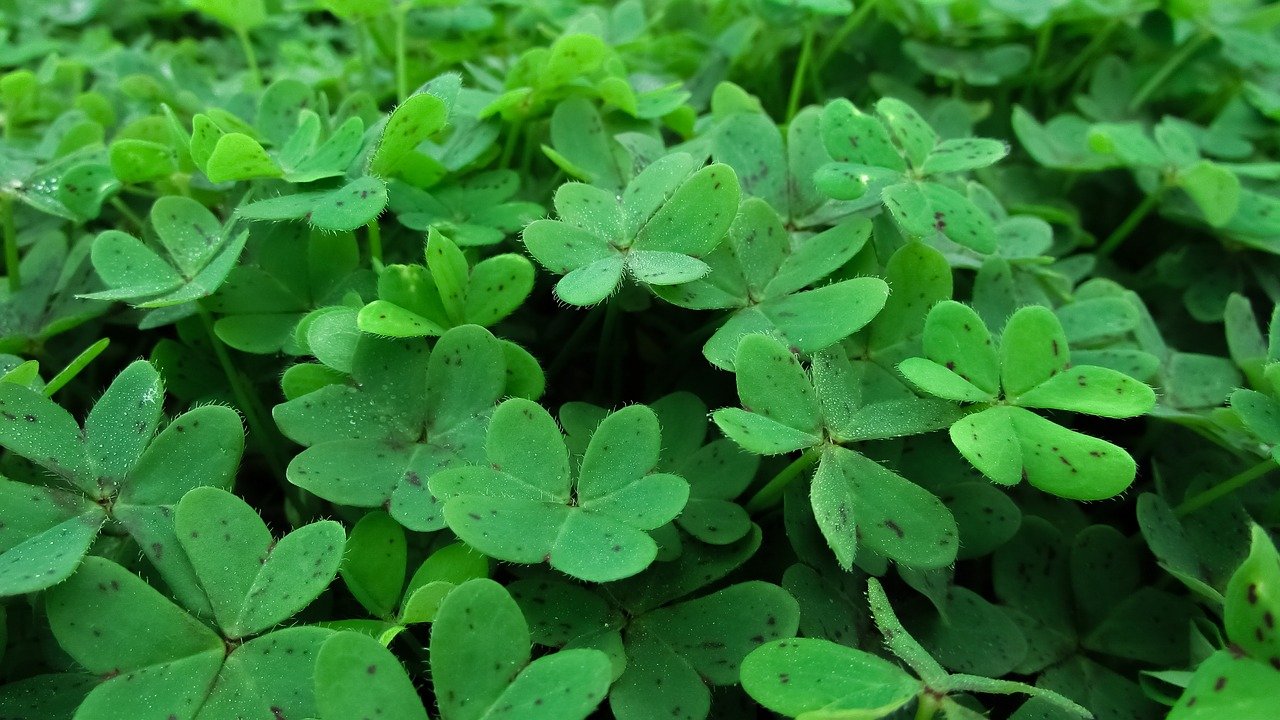You can quickly learn how to divide a shamrock plant into three steps. While it can be confusing what a shamrock plant is per se, it’s not surprising that many gardeners would love to have plenty of this three-leafed plant in the garden.
The most common shamrock plant is the wood sorrel or Oxalis, and you propagate it using root divisions. This makes shamrocks an easy plant for copying and reproducing the traits you’d like from a parent plant. Additionally, it’s worth noting that shamrocks are excellent house plants, so dividing them would be optimal in the greenhouse.

The greenhouse provides the ideal environment for starting plants, and this is also applicable to shamrock plants.
How To Divide A Shamrock Plant For Beginners
Dividing
The first step is preparing the divisions for planting. The best time to start this process is when your shamrock plant develops a new growth. This way, you know that the plant is breaking dormancy in early spring.
The University of Vermont Extension emphasizes the importance of waiting for the shamrocks to finish the dormant cycle before division, and this can happen in fall. The division itself is a simple process of taking the shamrock plant out of its media. You should see corms at the side of the roots that you can use for planting.
These corms are what make shamrock unique because they replace the usual root ball for the division. They look like tiny pine cones, and they are what you’ll use for planting. The fantastic thing about them is that you can plant these corms in any orientation.
Shamrock plant shall thrive regardless if you plant the corms sideways, upwards, or downwards.
Planting
After gathering the corms for planting, you can use potting soil and sand as your medium for them. You don’t need to bury them deep, but ensure that the container you’re using has good drainage. You don’t want to saturate them with water, and it’s essential to keep the medium moist to help shamrocks establish themselves.
An 8-inch wide nursery pot also makes a suitable container for corms, and each one can accommodate up to four shamrock divisions. And while shamrocks are not picky in orientation for planting, experienced gardeners recommend having the blunt face up and the tapered end down at a deep of two inches. This way, the foliage producing end is at the top.
What is the ideal location when starting shamrock divisions? The greenhouse will always be suitable for starting any plants as it protects these vulnerable divisions from harsh and unpredictable climate. With shamrock plants, they will thrive in a bright area that doesn’t receive direct sunlight.
Maintenance
As mentioned throughout this article, it is advantageous for gardeners to grow shamrock divisions in the greenhouse. It’s easier to maintain the ideal temperatures, 70°F at day and 60°F at night. You’ll also find it more comfortable to notice any signs of delay in growth, since you can identify the potential factor that caused it indoors.
What are the other growing requirements of shamrocks? You can fertilize them once with a dilute solution in the growing season and then repeat after flowering. After maintaining these requirements and using a greenhouse, you shouldn’t encounter problems.
The University of Arkansas Division of Agriculture even commends shamrock as an easy plant to grow. The only problem that you might see are pests like spider mites, but bugs like them are easy to prevent in the greenhouse. With diligence in maintenance and consistency in caring for the plants, your divisions should thrive and grow into healthy shamrocks.
Caring For Shamrock Plant
After successfully starting shamrocks from division, you can learn how to care for your plants. Although most shamrocks don’t like direct light, some varieties like red and pink shamrocks will thrive best in full sun. You should also maintain the temperature around 40°F and the humidity level at 50% in the greenhouse.
Watering shamrocks is similar to other plants where you can check the moisture of the medium beforehand. What about feeding shamrock? These plants are not heavy feeders, so they don’t require much supplementation of fertilizer.
However, you can always fertilize lightly during the growing season and enhance flowering using a balanced or blooming fertilizer. It’s worth noting to stop fertilizing once shamrock plants start their dormant cycle. Some varieties can have a short cycle, while some won’t enter dormancy at all.
Conclusion
Many gardeners are interested in growing the three-leafed shamrock. If the plants already exist in your garden, you can learn how to divide a shamrock plant using three steps. Start by checking if the plant has broken dormancy around fall.
You can dig up the plant and gather the corms. This makes shamrock easy to propagate because you don’t need to divide a root ball. Gather the corms at the sides of the root, and they are ready for planting.
Bury them with the blunt face up at a depth of 2 inches in a mixture of sand and potting soil. Ensure good drainage and moist medium while keeping the divisions in a bright location out of direct sunlight. Lastly, maintaining shamrock divisions is easy, mostly if you use a greenhouse to monitor the temperatures and address potential pests like spider mites.
